Physical Address
304 North Cardinal St.
Dorchester Center, MA 02124
The posterior tibialis tendon is susceptible to developing tendinitis as it curves around the medial malleolus ( Fig. 192.1 ). Acute eversion injury of the ankle is the most common cause of the development of posterior tibialis tendinitis, although running on soft or uneven surfaces also has been implicated. There may be coexistent bursitis of the associated bursae of the tendon and ankle joint, as well as arthritis, creating additional pain and functional disability. Posterior tarsal tunnel syndrome also may occur after acute eversion injuries or fractures to the ankle and may confuse the clinical picture.
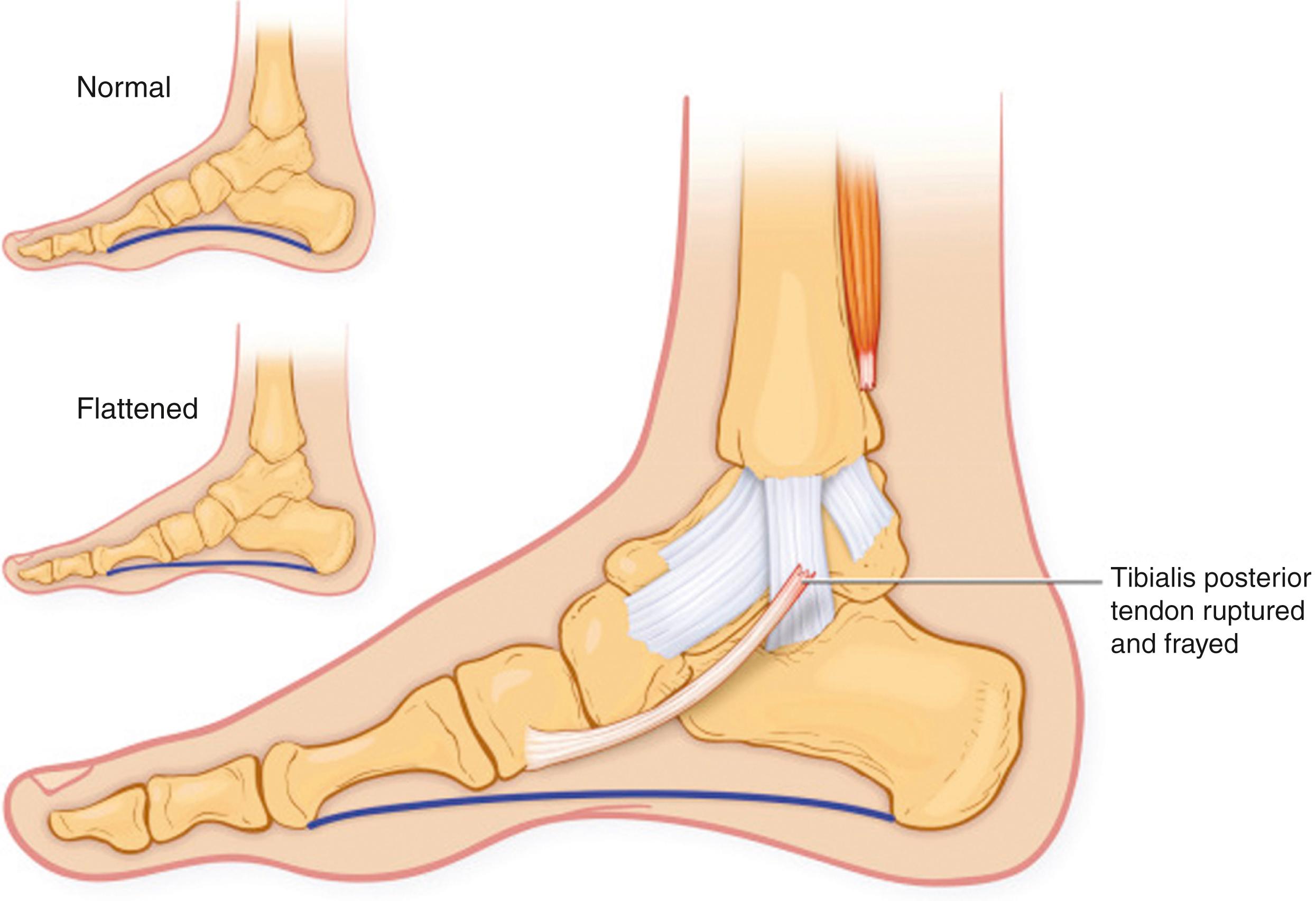
The pain of posterior tibialis tendinitis is constant and severe and is localized to the inner aspect of the ankle. Patients often report that it feels as though their shoes are rubbing the insides of their ankles raw, although on examination the skin appears normal. Significant sleep disturbance often is reported. The patient may attempt to splint the inflamed posterior tibialis tendon by adopting an antalgic gait to avoid using the affected tendon. Patients with posterior tibialis tendinitis exhibit pain with resisted inversion and passive eversion of the ankle. The inner aspect of the ankle may feel hot and appear swollen, which may be erroneously attributed to a superficial thrombophlebitis or cellulitis. Creaking or grating may be palpated when passively inverting and everting the ankle. There will be tenderness over the tendon ( Fig. 192.2 ). The acutely inflamed tendon is susceptible to tear or complete rupture ( Figs. 192.3 and 192.4 ). Patients who have suffered rupture of the posterior tibialis tendon will exhibit the “too many toes” sign when viewed from behind ( Fig. 192.5 ).
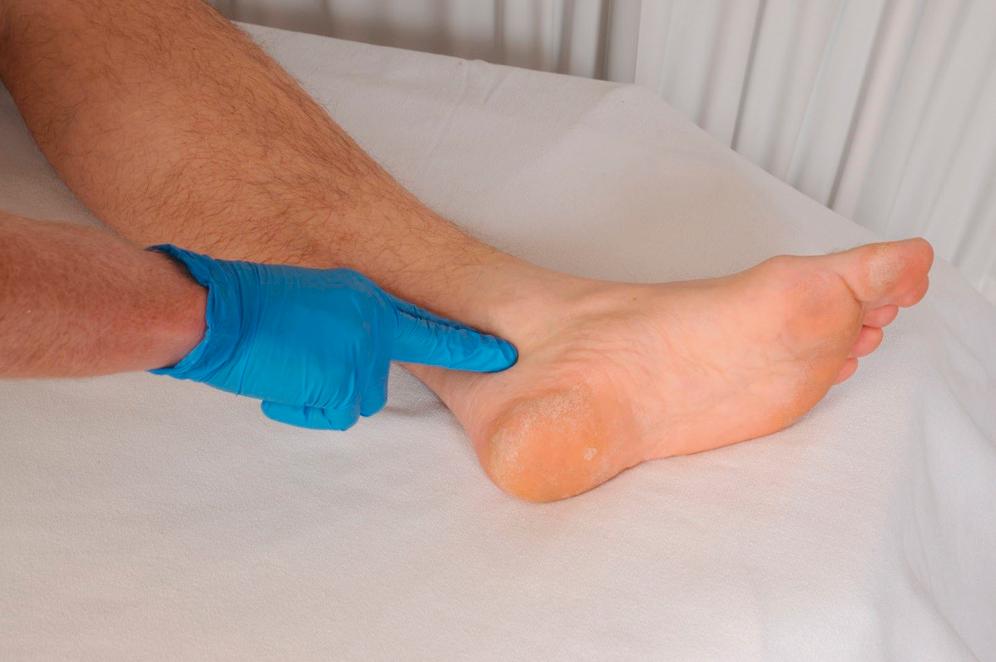
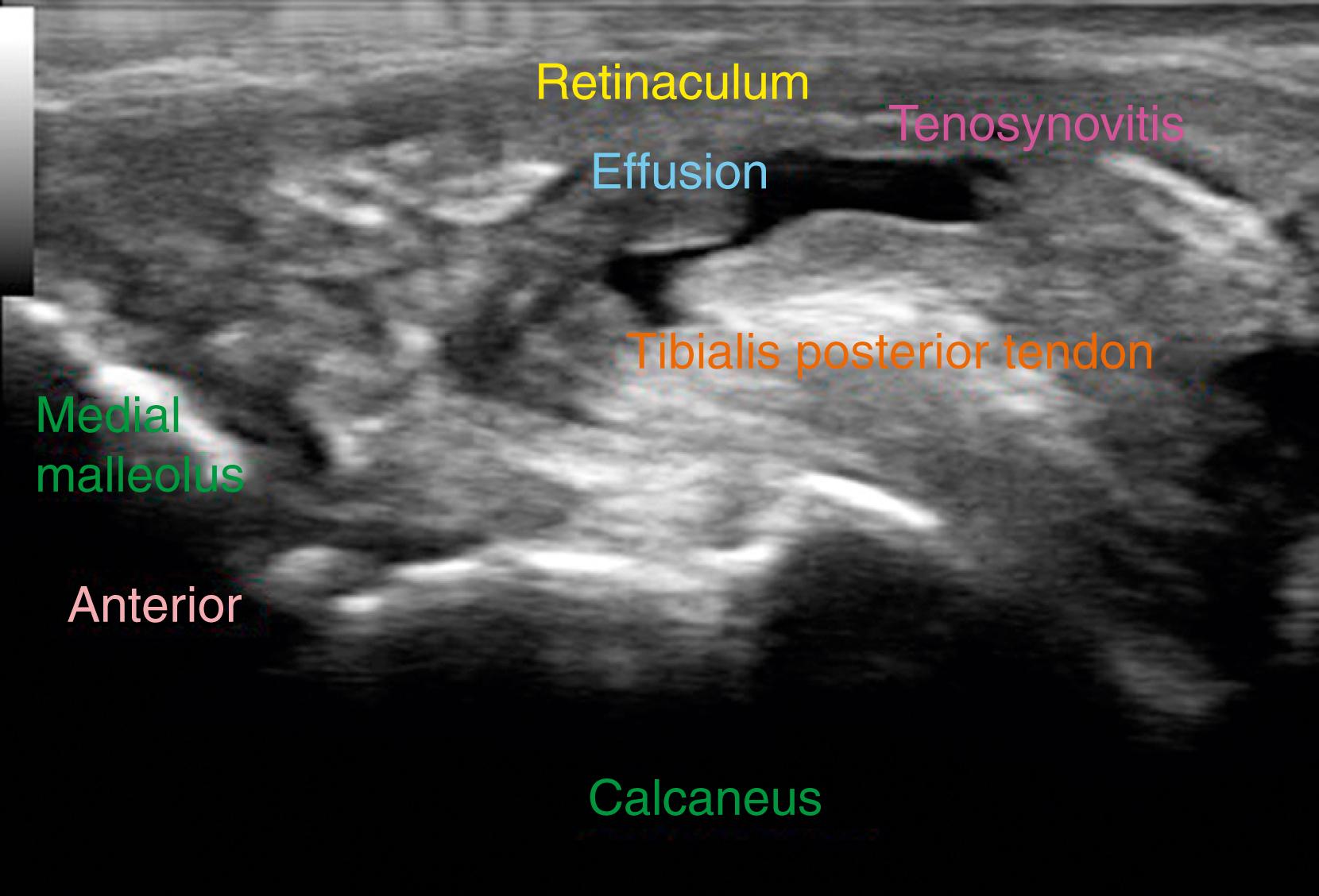
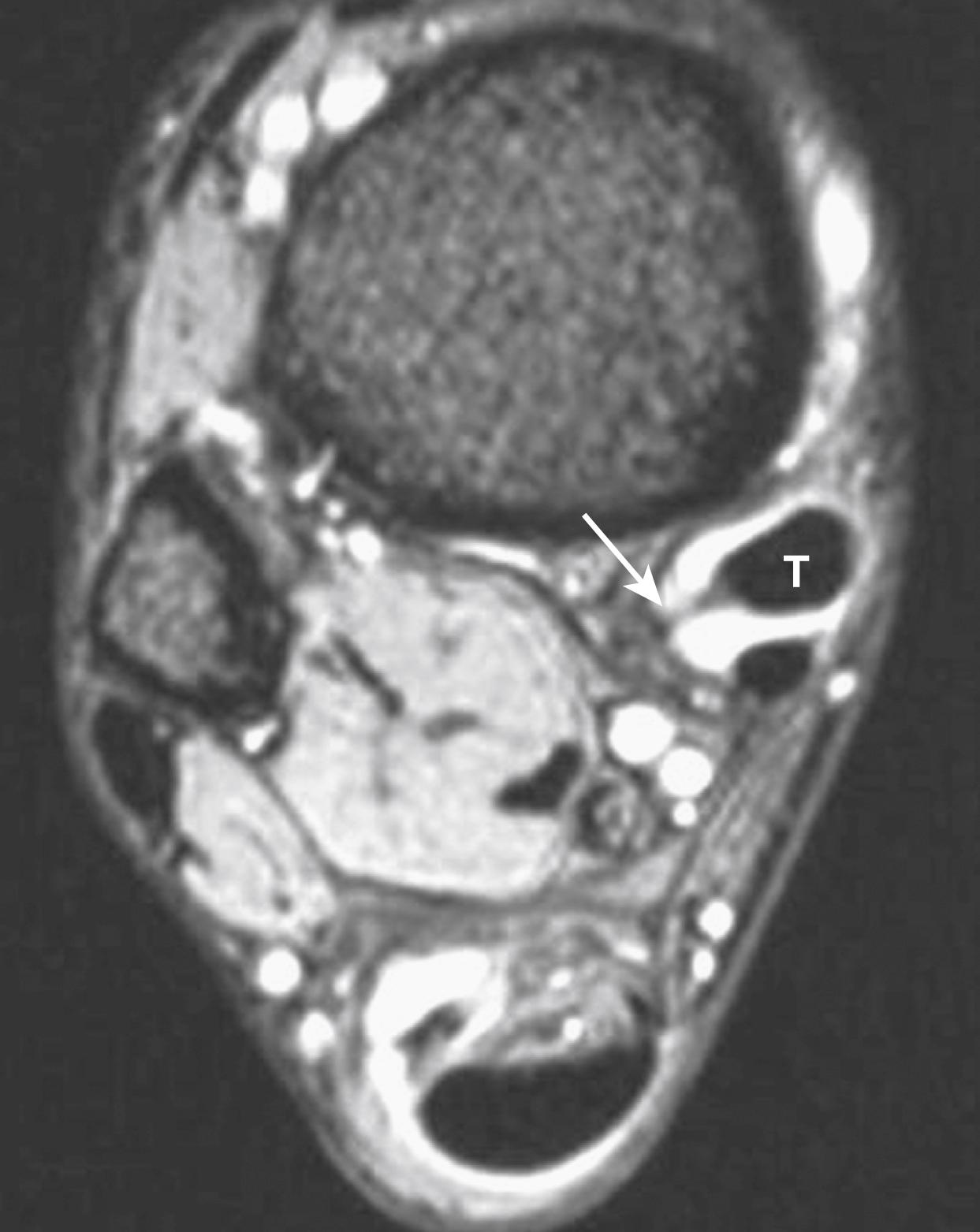
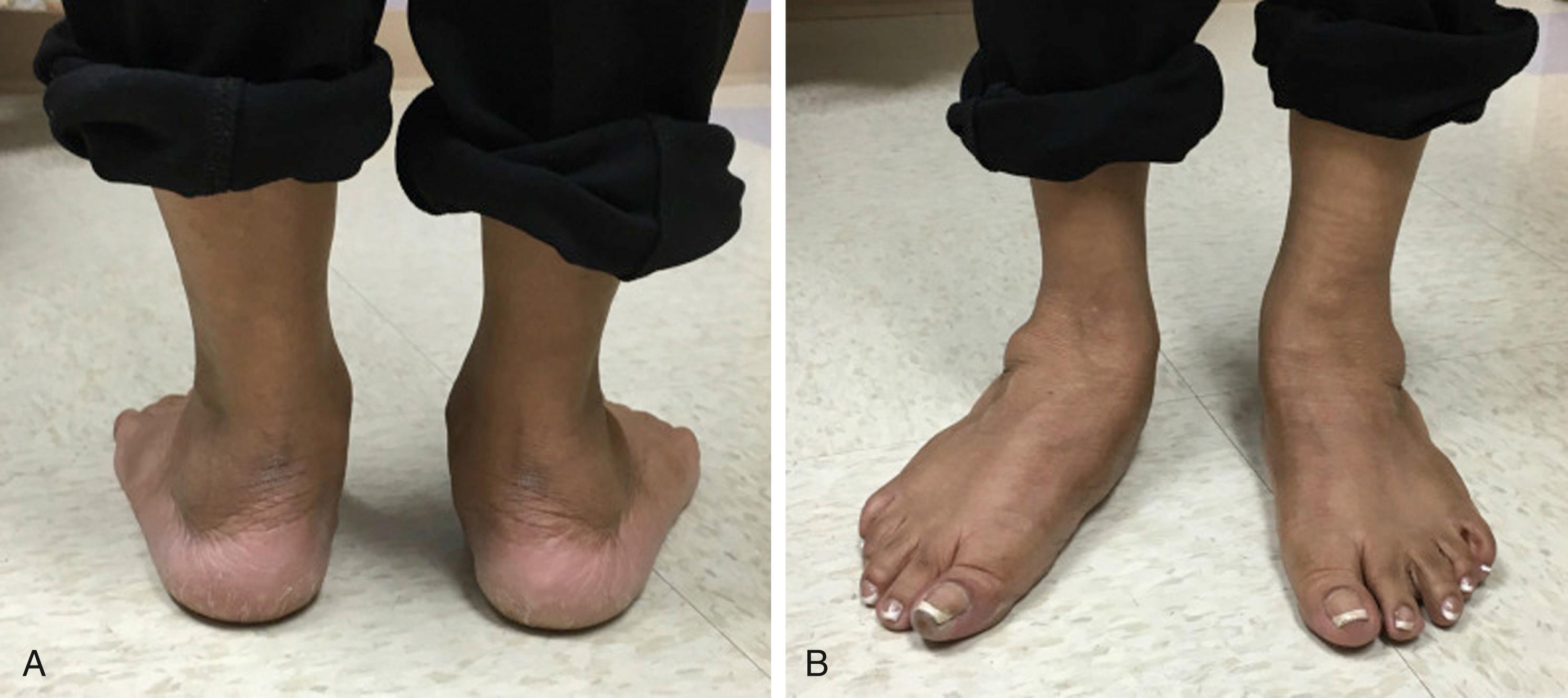
Plain radiographs are indicated for all patients with foot and ankle pain ( Fig. 192.6 ). On the basis of the patient’s clinical presentation, additional testing may be indicated, including complete blood cell count, sedimentation rate, and antinuclear antibody testing. Magnetic resonance imaging and ultrasound imaging of the foot and ankle are indicated if joint instability is suggested as well as to confirm the diagnosis ( Fig. 192.7 ). Radionuclide bone scanning is useful for identifying stress fractures of the foot and ankle not seen on plain radiographs. The injection technique described later serves as both a diagnostic and a therapeutic maneuver.
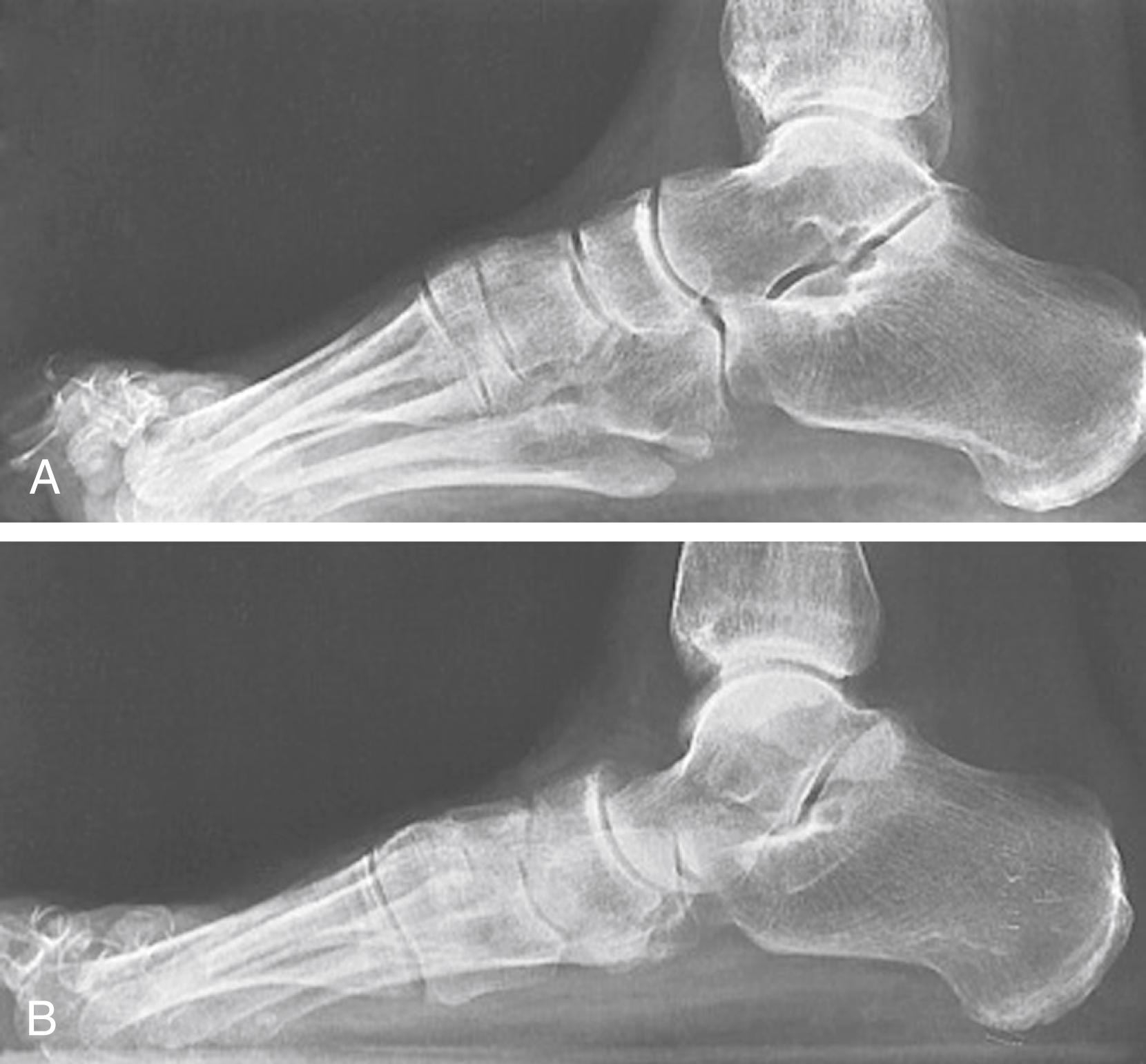
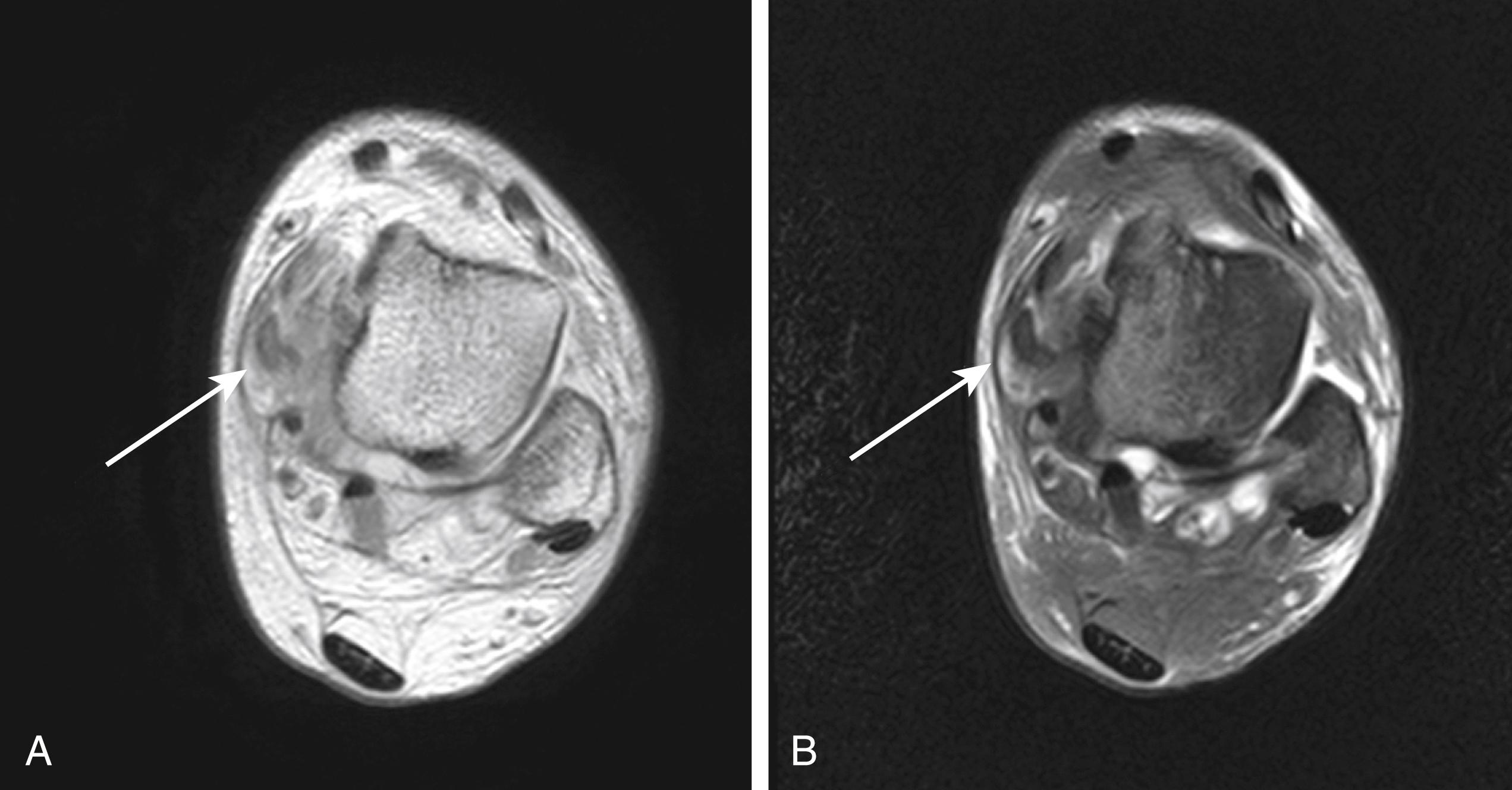
The posterior tibialis muscle has its origin from the posterior tibia and fibula. The tendon of the muscle runs behind the medial malleolus, beneath the flexor retinaculum, and into the sole of the foot and inserts on the navicular bone ( Fig. 192.8 ). The tendon is susceptible to developing tendinitis as it curves around the medial malleolus. The posterior tibialis muscle plantarflexes the foot at the ankle and inverts the foot at the subtalar and transverse tarsal joints.
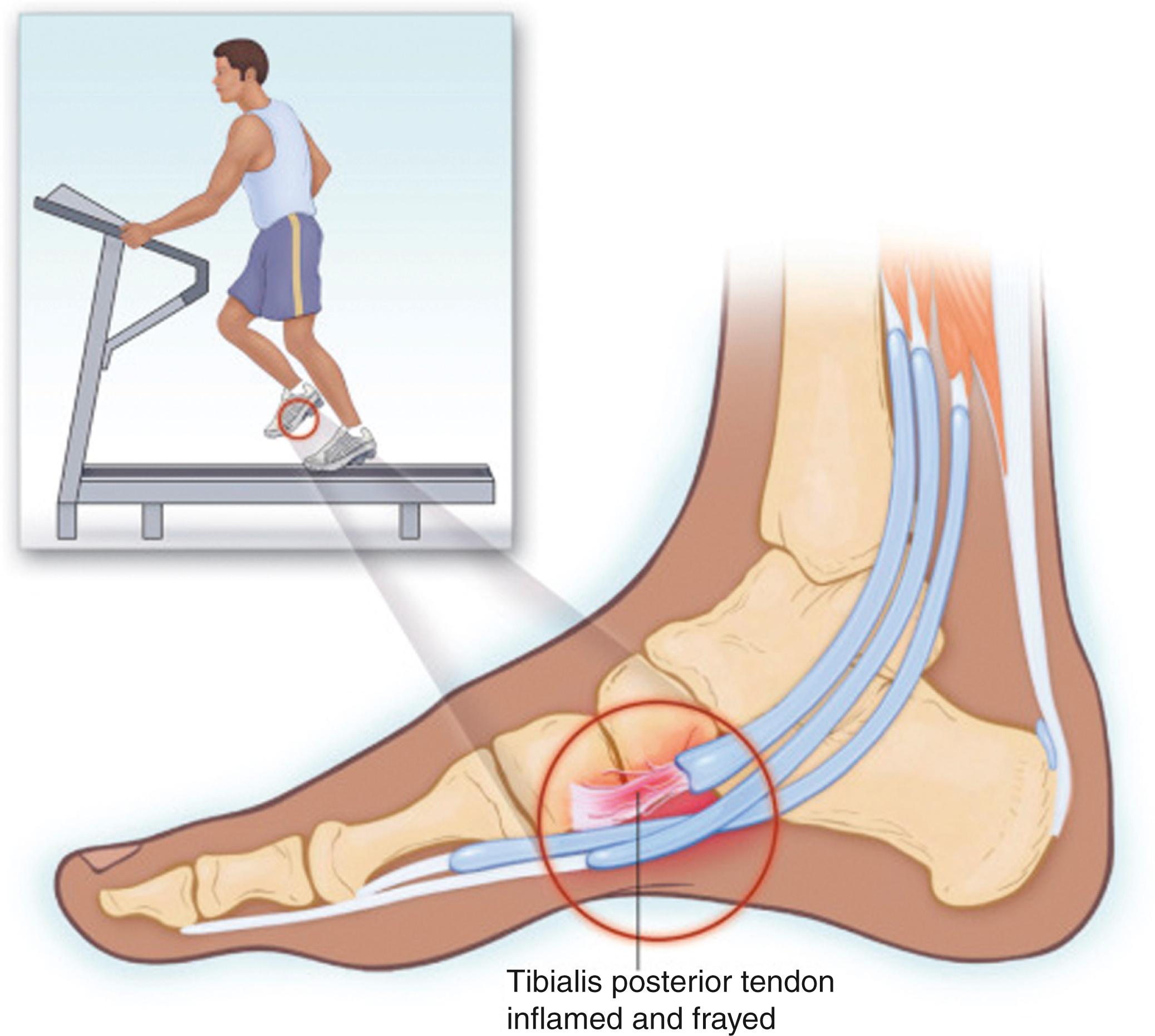
Become a Clinical Tree membership for Full access and enjoy Unlimited articles
If you are a member. Log in here